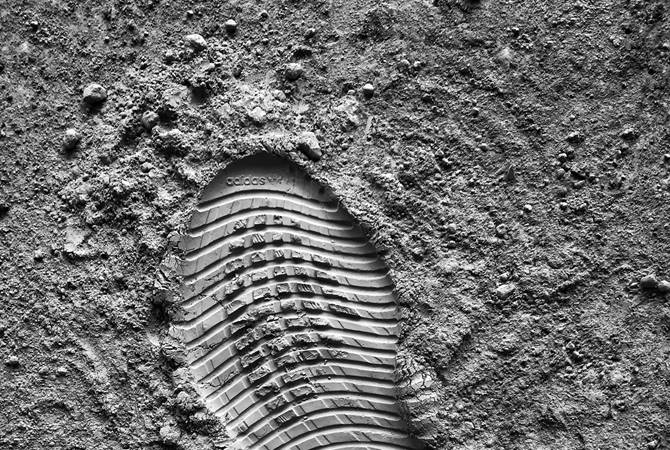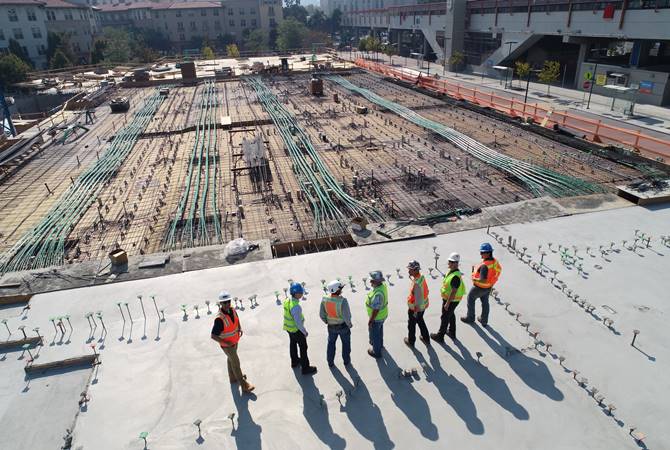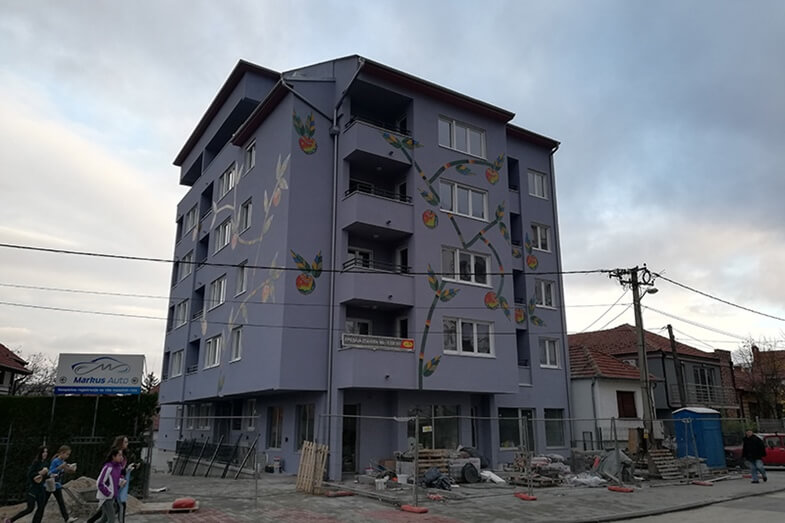
Da li uopšte postoji zamena za beton? Da li bi ta, alternativa za beton, mogla da podnese sve što može i ovaj, nezaobilazni materijal koji se u građevini koristi kao osnova, još od šestote godine naše ere.
Izgleda da je moguće…
Novo vreme, rađa nove potrebe u društvu, među kojima se najpre ističe potreba da manje utičemo na životnu sredinu, pa i da je zaštitimo od nas samih.
Tako su “rođene” nove vrste građevinskih materijala; ekološki podobnija rešenja za smanjenje emisije štetnih gasova, odnosno – alternativa za beton za koji se procenjuje da je odgovoran za oko 7% emisije ugljen-dioksida na svetu.
Beton, iako najkorišćeniji, postao je i najodgovorniji za zagađenost, stoga mora biti zamenjen u budućnosti. Međutim, zamena za beton još uvek u nedovoljnoj meri zastupljena.
Šta je beton, kako nastaje i koliko šteti prirodi i ljudima?
Beton je drugi najkorišćeniji materijal na svetu, nakon vode. Procenjuje se da skoro 70% ljudske populacije živi na betonu. Zahvaljujući njegovoj izdržljivosti, odvajkada se koristi za izgradnju stambenih zgrada, mostova, puteva, vodovoda i sl.
Godišnje se proizvede (napravi) preko 20 milijardi tona betona, što ubrzano rasplamsava razmišljanja o uticaju betona na emisiju štetnih gasova, posebno jer zahteva veliku količinu različitih prirodnih resursa kako bi se proizveo.
Globalno zagrevanje je još jedan od razloga zašto je revolucija građevinskih materijala tema broj 1 ukoliko želimo opstanak.
Beton se dobija mešavinom cementa, šljunka, peska i vode. Upravo je cement najveći krivac za zagađenje. Cement se dobija iz kalcijuma, koji se obično oslobađa sagorevanjem krečnjaka.
Da li je alternativa za beton uopše moguća
Svuda oko nas su glina, šljunak, pesak, kamen i druge od sirovina koje će večito biti na ovoj planeti. Mešavina ovaih materijala često sadrži reaktivnu supstancu neophodnu za formulu betona.
Zidanje betonom je oduvek bilo prisutno u građevini kao odličan vid gradnje jer je beton izdržljiv i dugotrajan.
Ipak, došlo je vreme da prestanemo da se oslanjamo na ono što je najrasprostranjenije u upotrebi/mešavini betona – a to je cement.
Cement iziskuje veliku količinu energije da bi se napravio. Sa druge strane, stvaranje ekoloških veziva može pomoći industriji u razvijanju novog pogleda na drevne vrste građevinskog materijala i procesa gradnje.

Zamene za beton – od prirodnih do laboratorijski “izgrađenih”
Naći novu svrhu materijalima koji se smatraju otpadom je izuzetno pametan potez ukoliko težimo održivoj gradnji.
Naučnici su svesni problema koji potrošnja betona ima na prirodu, i odlučni su u nameri da se napravi idealna zamena za beton.
Predstavićemo vam samo neke od prirodnih i laboratorijski osmišljenih alternativa za beton, pa ćemo zajedno razmisliti da li ti materijali uopšte imaju “budućnost”.
Alternativa za beton – Reciklirana plastika
Najveći otpad danas dolazi od plastike; a plastika nije razgradiva u svom konačnom obliku. Međutim, plastika se lako (relativno lako) reciklira.
Tako reciklirana plastika, može se koristiti kao jedan od vezivnih materijala za proizvodnju betona.
Iako beton sa primesama plastike neće biti snažan kao “ranije”,ovo rešenje je prihvatljiva i “ekofrendli” alternativa za beton.
Kompozitni cement kao zamena za beton
Kompozitni beton je potencijalno najstabilnija zamena za beton, a i zahteva manje energije i drugih resursa da bi se proizveo.
Kompozitni beton je dokazan, i trenutno najbolji način da se zidovi ojačaju, ali i da im se obezbedi vatronepropusnost, zvučna izolacija, i visok stepen otpora na razne, unutrašnje, i atmosferske promene.
“Zeleni beton” od reciklirane plastike, stakla i papira
Evo još jednog načina da se reciklažom dođe do alternativa za beton, i smanji uticaj emisije štetnih gasova. Papirna vlakna (tanka drvena vlakna), plastični otpad i stakleni otpad preradom mogu dati gradivni materijal za beton koji bi postao “zeleni”.
Reciklirano staklo je veoma inertan ali irazito primenjiv materijal koji može poslužiti za davanje čvrstine našem budućem betonu. Staklo se može reciklirati mnogo puta, bez bojazni da će se njegove hemijske karakteristike promeniti.
“Fibrozni” beton ili beton od papira dobija se korišćenjem otpadnog (recikliranog) kartona. Iako ne može u potpunosti zameniti celokupnu smesu tradicionalnog betona, dovoljno je pomenuti ga u borbi protiv nuspojava proizvodnje betona.
“Mikrosilika” – zamena za beton nastala proizvodnjom silikona
Mikrosilika je ultrafini prah nastao kao subprodukt proizvodnje silikonskih materijala, kondenzacijom silikon dioksida. Smatra se da može postati alternativa za beton u procentu od 7% do 12%.
Možda nije mnogo, ali u kombinaciji sa još nekim “ekološkim” materijalima, mikrosilika ima dobru šansu. Takođe, ovaj materijal je posebno koristan ukoliko želimo da naša zamena za beton bude izdržljiva.

“Finite” – “Pustinjski pesak” kao ekološka alternativa za dva problema
Finite je materijal koji ima mehaničke karakteristike kao i beton, ali ostavlja upola manji ugljenični otisak.
Takođe, ova potencijalna zamena za beton je biorazgradiva. Finite se dobija od pustinjskog peska – resursa koji se do sada bio praktično neprimetan u građevini zbog preterano male granulacije (mnogo je sitan).
Finite je kao zamena za beton razvijen na Imperial koledžu u Londonu, i njegov naziv znači “krajnji”, “konačni”.
A zašto? Pa, iako građevina nije bila orna da prihvati pustinjski pesak kao deo grandje, on se i te kako mnogo eksploatiše za proizvodnju stakla i pravljenje mikročipova.
U tim industrijama je toliko nezamenjiv, da počinje da vlada oskudica na svetskim razmerama.
Pesak se masovno iskopava sa obala reka i dna mora, čime se pravi velika šteta životnoj sredini.
- Finite je tu da ponudi rešenje za oba problema, i da postane zamena za beton, i da zameni pravi pesak (pustinjski, sitni pesak).
Mikroarmirani beton rešava nekoliko problema na gradilištu
Mikroarmirani betoni omogućavaju značajne uštede u vremenu i troškovima izgradnje. Ukoliko potpuno zameni klasičnu armaturu, ova zamena za beton može skoro u potpunosti eliminisati potrebu za armiračkim radovima, čime se znatno ubrzava izgradnja, i smanjuje potreba za radnom snagom.
Pronalazak adekvatnih zamena za beton je dobro rešenje naročito za mesta gde su prirodni resursi ograničeni.
Dosadašnji koncepti i napori da se do relevantnog rešenja dođe, zasnivaju se na ideji da se odbačeni beton kombinuje sa nekoliko relativno svuda dostupnih elemenata, kao što su:
- Ugljen-dioksidom iz industrijskih izduvnih gasova ili vazduha
- Drvetom (bambus i dr.)
- Pomenutim reciklažnim materijalima (staklo, karton, plastika…)
- Silikatnim materijalima
Međutim, za sada, nijedna od alternativa za beton ne može da zameni standardni beton. Nijedna primesa nije toliko jaka.
Da sažmemo našu priču o potencijalnim alternativama za beton
Iako još uvek nemamo najbolju, i najsigurniju zamenu za beton, treba imati u vidu da smo praktično tek na početku.
Ostaje da se vidi kako će se određeni građevinski materijali ponašati u betonu korišćenom za manje građevinske projekte: poput malih kuća i sl.
Uzimajući u obzir da je beton najrasprostranjeniji građevinski materijal, cementne mešavine sa materijalima o kojima smo govorili, mogu imati veliki uticaj na okruženje i u značajno doprineti postizanju cilja – održivoj gradnji, poput one opisane u LEED standardizaciji zelenih zgrada.
O zelenoj gradnji Grading je pisao u skorašnjem blogu. Ne propustite da se informišete.
LINK: Zelena gradnja u Srbiji – Šta je održiva gradnja i koje su njene prednosti?
Podsticanje arhitekata i graditelja da u svom radu koriste nove materijale predstavlja izazov, a tim kompanije Grading, uveliko uspeva u toj nameri.







